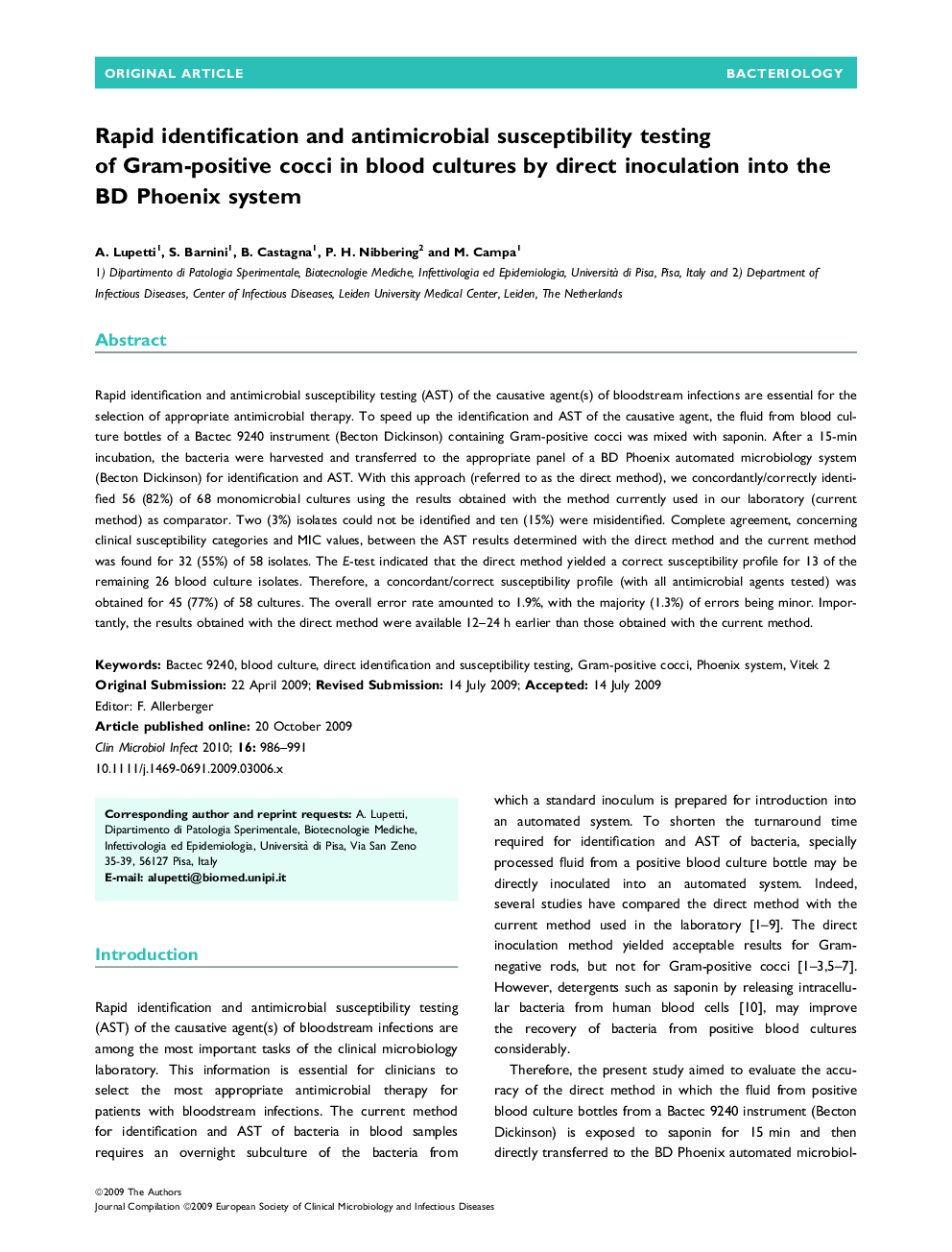| Article ID | Journal | Published Year | Pages | File Type |
|---|---|---|---|---|
| 3397966 | Clinical Microbiology and Infection | 2010 | 6 Pages |
Rapid identification and antimicrobial susceptibility testing (AST) of the causative agent(s) of bloodstream infections are essential for the selection of appropriate antimicrobial therapy. To speed up the identification and AST of the causative agent, the fluid from blood culture bottles of a Bactec 9240 instrument (Becton Dickinson) containing Gram-positive cocci was mixed with saponin. After a 15-min incubation, the bacteria were harvested and transferred to the appropriate panel of a BD Phoenix automated microbiology system (Becton Dickinson) for identification and AST. With this approach (referred to as the direct method), we concordantly/correctly identified 56 (82%) of 68 monomicrobial cultures using the results obtained with the method currently used in our laboratory (current method) as comparator. Two (3%) isolates could not be identified and ten (15%) were misidentified. Complete agreement, concerning clinical susceptibility categories and MIC values, between the AST results determined with the direct method and the current method was found for 32 (55%) of 58 isolates. The E-test indicated that the direct method yielded a correct susceptibility profile for 13 of the remaining 26 blood culture isolates. Therefore, a concordant/correct susceptibility profile (with all antimicrobial agents tested) was obtained for 45 (77%) of 58 cultures. The overall error rate amounted to 1.9%, with the majority (1.3%) of errors being minor. Importantly, the results obtained with the direct method were available 12–24 h earlier than those obtained with the current method.
